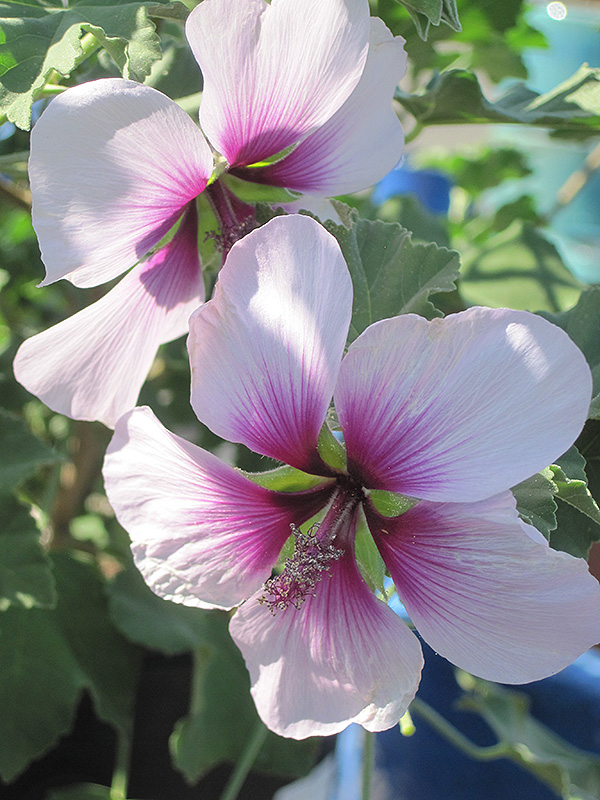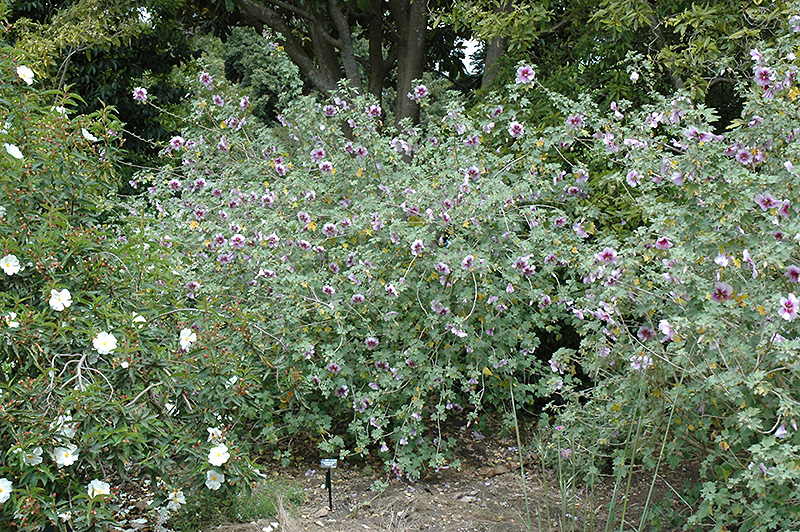Height: 8 feet Spread: 10 feet
Sunlight:
Hardiness Zone: 9a Other Names: syn. Lavatera maritima, Rose Mallow Description: Large, pale pink to white flowers, with striking fuchsia centers from summer to fall; does not tolerate cold, drying winds; fast growing and easy to maintain; cut back to the ground in spring in colder areas Ornamental Features Tree Mallow features showy shell pink flowers with white overtones and fuchsia centers along the branches from mid spring to early fall. The flowers are excellent for cutting. It has green foliage with hints of gray. The fuzzy lobed leaves do not develop any appreciable fall color. Landscape Attributes Tree Mallow is an open multi-stemmed deciduous shrub with an upright spreading habit of growth. Its relatively coarse texture can be used to stand it apart from other landscape plants with finer foliage. This is a relatively low maintenance shrub, and is best cleaned up in early spring before it resumes active growth for the season. Gardeners should be aware of the following characteristic(s) that may warrant special consideration; Tree Mallow is recommended for the following landscape applications; Planting & Growing Tree Mallow will grow to be about 8 feet tall at maturity, with a spread of 10 feet. It tends to be a little leggy, with a typical clearance of 1 foot from the ground, and is suitable for planting under power lines. It grows at a fast rate, and under ideal conditions can be expected to live for approximately 6 years. This shrub should only be grown in full sunlight. It does best in average to evenly moist conditions, but will not tolerate standing water. This plant will benefit from an application of bonemeal and/or mycorrhizal fertilizer at the time of planting. It is not particular as to soil type or pH, and is able to handle environmental salt. It is somewhat tolerant of urban pollution. This species is not originally from North America. Tree Mallow makes a fine choice for the outdoor landscape, but it is also well-suited for use in outdoor pots and containers. With its upright habit of growth, it is best suited for use as a 'thriller' in the 'spiller-thriller-filler' container combination; plant it near the center of the pot, surrounded by smaller plants and those that spill over the edges. It is even sizeable enough that it can be grown alone in a suitable container. Note that when grown in a container, it may not perform exactly as indicated on the tag - this is to be expected. Also note that when growing plants in outdoor containers and baskets, they may require more frequent waterings than they would in the yard or garden.![]()
![]()
![]()
![]()
![]()
![]()
![]()
![]()
![]()
top of page
Louie's Nursery Menifee - Plant Finder
Characteristics
Applications
Features & Attributes
This tool is an online resource representing many of the varieties that we carry over the course of the season, and is intended for informational purposes only. Inventory varies seasonally, so we cannot guarantee that every plant will be in stock at all times - please contact the store directly for current availability. It does not include our entire selection of plants, so be sure to visit our store to see varieties that may not be represented on this list.
bottom of page

